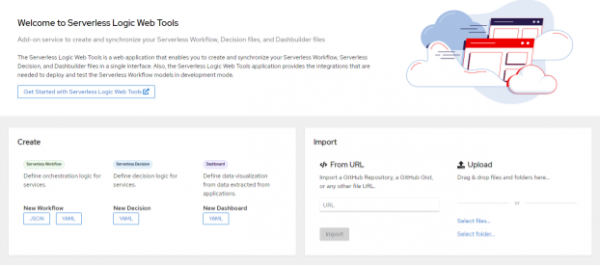Red Hat OpenShift 4.16, based on Kubernetes 1.29 and CRI-O 1.29, is now generally available. This article highlights notable updates in this release for Developers with OpenShift.
More capabilities for your development environment
The Developer Perspective in OpenShift Console adds a new section to the list of Resources on the Search page to show recently searched items in the order that they were searched and the ability to collapse and expand the Getting Started section. Red Hat Developer Hub, based on the Backstage project, provides software templates and plugins for OpenShift deployments, access to pipeline runs, viewing clusters from OCM and more. Red Hat Developer Hub 1.2, based on Backstage project 1.23.4, has added a new UI for managing RBAC controls, the General Availability of the Red Hat Developer Hub Operator, and support for EKS and AKS. The OpenShift Toolkit IDE extension by Red Hat, for Visual Studio Code and IntelliJ now lets you provision any OpenShift cluster using the sandbox from VS Code and create routes and port forwarding for connected OCP from IDE. Use Podman AI Lab for your Gen AI developer environment. It's an open source extension for Podman Desktop to work with large language models (LLMs) in your local environment.
Red Hat build of MicroShift 4.16
Red Hat build of MicroShift derived from OpenShift and designed for small form factor devices and edge computing. Red Hat build of MicroShift 4.16 is supported on Red Hat Enterprise Linux (RHEL) or RHEL for Edge version 9.4 and supports using multiple networks with the MicroShift Multus plugin, including: Bridge, IPVLAN , and MACVLAN. This release also supports using GitOps with Argo CD agent derived from GitOps 1.12 in Technology Preview. More information about this release can be found in the Red Hat build of MicroShift release notes.
OpenShift Pipelines 1.15 based on Tekton 0.59

OpenShift Pipelines is a cloud-native continuous integration and continuous delivery (CI/CD) solution based on Kubernetes that automates deployments across multiple platforms by removing the hidden implementation details. With Release 1.15, the Red Hat Tekton Catalog is now in General Availability. The catalog adds support for Tekton tasks and pipelines supported by Red Hat’s product portfolios; including, tasks for OpenShift Virtualization cleanup VM, Windows Unified Extensible Firmware Interface (UEFI) installer, Maven, Buildah, and others. The catalog is available via the Artifact Hub. The Manual Approval Gate functionality is in Technology Preview. This custom resource definition (CRD) controller allows the addition of manual approval points in the pipeline so that the pipeline stops at that point and waits for a manual approval before executing. Passing parameters to GitOps commands to trigger and test pipelines is supported with ChatOps support in Pipelines as Code which is in Technology Preview.
OpenShift GitOps 1.13 based on Argo CD 2.11
OpenShift GitOps allows administrators to consistently configure and deploy Kubernetes infrastructure and applications across clusters and development lifecycles. Release 1.13 adds two new features in General Availability, Argo Rollouts and Applications in any namespace. With Argo Rollouts, deployments can be rolled back manually or automatically based on your customized metrics. Plus there is support for canary and blue/green deployments. More information can be found in the OpenShift GitOps 1.12 release notes.
OpenShift Serverless 1.33 based on Knative 1.12

OpenShift Serverless provides autoscaling and networking for containerized microservices and functions. Serverless logic, which lets you set up events and functions/services using no code or low code, is now in General Availability. OpenShift Serverless now supports ARM64 in Technology Preview. The Custom Metrics Autoscaler Operator to autoscale Knative Eventing sources for Apache Kafka sources, defined by a KafkaSource object, is now integrated and available in Technology Preview. The new trigger filter that lets users specify a set of filter expressions is available in Technology Preview. To learn more, please see the OpenShift Serverless 1.33 release notes.
OpenShift Service Mesh 2.6 based on Istio 1.20 and Kiali 1.73
Red Hat OpenShift Service Mesh creates a central point of control in an application. The latest release adds General Availability support for the Kubernetes Gateway API which supports cluster-side meshes. With the General Availability of the OpenTelemetry collector and Tempo distributed tracing integration, Jaeger and Elasticsearch will no longer be installed by default with new installations. OpenShift Service Mesh 3.0 will become available in Tech Preview shortly.
New observability components available
Red Hat OpenShift Observability provides real-time visibility, monitoring, and analysis of system metrics, logs, traces, and events so that issues can be diagnosed and troubleshot before they impact systems or applications. Red Hat build of OpenTelemetry based OpenTelemetry unifies, standardizes, and delivers vendor-neutral telemetry data collection for cloud-native software. The Red Hat build of OpenTelemetry 3.2 based on OpenTelemetry operator release 0.100.1 introduces several new components in Technology Preview. New receivers, including Kubernetes cluster, events, objects and stats, that collect and observe data coming from OpenShift APIs and log files with the filelog and journald receivers have been added. The Forward connector connects observability pipelines, while the Load-balancing exporter adds scalability.

The Red Hat OpenShift distributed tracing platform 3.2 based on the open source Grafana Tempo 2.4.1 version via the Tempo operator release v0.10.0 adds Tracing UI in the OCP web console under the Observe tab which shows traces for the selected Tempo stacks in Developer Preview.
Get started today with Red Hat OpenShift 4.16
To find out more about Red Hat OpenShift 4.16, including a list of new features and fixes, see Red Hat OpenShift 4.16: What You Need to Know or the release notes.
Ready to try Red Hat OpenShift?
- Start your OpenShift journey: Start your Developer Sandbox for Red Hat OpenShift.
- Find resources for Getting Started with OpenShift
- Discover more ways to try OpenShift: Red Hat OpenShift download.
- Check out the interactive learning content.
- Visit the Red Hat OpenShift product page to learn more.
- Stay up-to-date with the Red Hat Developer community at Red Hat Developer YouTube channel.
